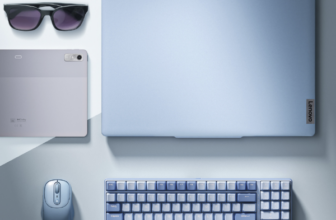
Huawei and Apple are leading the way into the high-definition audio era for TWS headphones. With the recent release of Huawei’s Mate50 series and Apple’s iPhone 14 series, both brands have once again set new standards for flagship smartphones. At the same time, they have also introduced their latest TWS headphones, sparking widespread interest. Notably, Apple’s AirPods Pro 2, arriving three years after its predecessor, has captured significant attention in the high-definition audio era.

Major Brands Drive High-Definition Audio for TWS Headphones
Apple has long dominated the TWS headset market, with AirPods becoming an essential accessory for iPhone users. However, competition is intensifying as other manufacturers continue to innovate. Domestic brands, including Huawei, have made significant strides in sound quality, noise reduction, and spatial audio, pushing the industry forward.
Huawei’s FreeBuds Pro 2 exemplifies this evolution, boasting advanced noise cancellation, high-definition decoding, and spatial audio support. As a result, it presents a formidable challenge to Apple’s AirPods Pro 2. With these releases, a new battle in the TWS headset market has begun, with the ultimate goal of establishing dominance in the high-definition audio era. For more details on the latest TWS innovations, visit TinyDeals.

Different Approaches to High-Definition Audio
Apple first introduced spatial audio with AirPods Pro in 2019, significantly enhancing the listening experience. The positive response from users encouraged further improvements in AirPods Pro 2, offering an even more immersive sound.
On the other hand, Huawei’s FreeBuds Pro 2 marks its debut in the spatial audio domain. It takes a significant leap by incorporating full-link high-definition spatial audio, ensuring a wider sound field with richer details. Although both companies share a common goal of high-definition spatial audio, they employ different technological approaches.
A Technical Comparison: Apple vs. Huawei
Apple’s AirPods Pro 2 relies on Dolby Atmos for 3D audio, whereas Huawei’s FreeBuds Pro 2 adopts Audio Vivid, a domestically developed standard. This distinction highlights a direct competition between two spatial audio technologies.
Regarding rendering algorithms, Apple integrates head tracking with HRTF (Head-Related Transfer Function), while Huawei goes further by adding scene-based spatial sound field rendering, enhancing immersion in the high-definition audio era.
One major criticism of Apple’s AirPods Pro 2 is its continued use of the AAC codec, which does not support lossless audio. In contrast, Huawei’s FreeBuds Pro 2 supports its proprietary L2HC 2.0 high-definition codec and LDAC, delivering transmission rates of up to 990Kbps and a resolution of 24bit/96kHz. This gives Huawei a competitive edge in terms of audio quality and signal stability.
Despite this, Apple’s innovation remains evident with the introduction of the H2 chip, enhancing noise cancellation, spatial sound, and battery efficiency. Meanwhile, Huawei’s FreeBuds Pro 2, co-engineered with Devialet, excels in audio tuning. It features a TWS three-microphone stereo array active noise reduction system, achieving a maximum noise reduction depth of 47dB. Additionally, the inclusion of a bone voiceprint pickup microphone enhances call clarity, providing a high-definition call experience.
Conclusion
Both Apple’s AirPods Pro 2 and Huawei’s FreeBuds Pro 2 are groundbreaking products in the high-definition spatial audio landscape. Many have praised AirPods Pro 2 as one of the best releases from Apple’s latest event. Meanwhile, Huawei FreeBuds Pro 2 strengthens the position of domestic brands by promoting the Audio Vivid spatial audio standard and excelling in noise cancellation and sound quality.
Ultimately, these two products showcase the remarkable advancements in TWS headphone technology, each bringing unique strengths to the market. As the competition heats up, consumers can look forward to even more innovations in the high-definition audio era. For the latest updates and deals on TWS headphones, check out TinyDeals.




